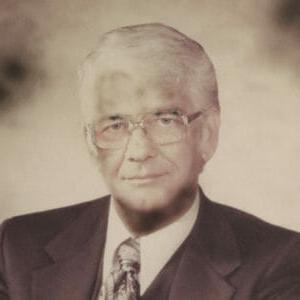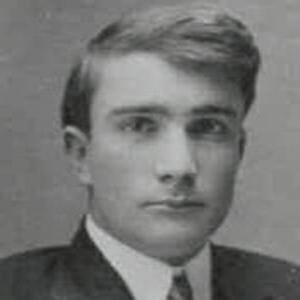Jackson College Former Presidents
A committed, insightful group of leaders have guided the College throughout its history. Through the changing times and trends, each has used his gifts to ensure the College offers outstanding educational opportunities and is a resource to the community.

E. Lee Howser
1993-2000, President of JCC
Dr. E. Lee Howser served as the fifth president of Jackson Community College from 1993 to 2001. He served the College 32 years, also holding positions as director of public information, assistant to the president, and vice president for administration. He was instrumental in encouraging the Learning College concept and led the College through an extensive visioning project. He was committed to the CARE program, which offered scholarships to middle school students who could benefit upon successful graduation from high school, and vigorously supported the Day Care Center on campus. He and his wife, Norma, initiated a restoration project for the Wickwire House.

Clyde E. LeTarte
1981-1993, President of JCC
Clyde LeTarte held several academic positions throughout his exceptional career before taking the Jackson Community College presidency in 1981. He faced turbulent times with difficult budget decisions during his years as Jackson College president, but proved himself to be a strong leader who was respected by his employees. He extended the College’s reach into Lenawee County in 1989 and Hillsdale County in 1991, increasing the College’s enrollment. The Hillsdale center today is named for him. LeTarte was elected to the Michigan House of Representatives, serving House District 65 from 1993-1998.

Harold V. Sheffer
1972-1981, President of JCC
Harold V. Sheffer was appointed as third president of Jackson Community College in 1972. He brought a diverse background, having worked in business, a non-profit and as a cleric in both the Methodist and Episcopal churches. The remarkable growth in student enrollment and physical facilities attests to his vision and planning skills. His term of office was marked by the development of the George E. Potter Center, Michigan Space Center, Dahlem Environmental Education Center, Michigan School of the Arts and the Flight Center. In 1993, the College named the Music Hall after Sheffer. He was also a recognized leader at the state levels and among fellow community college presidents, leading to the presidency of the Michigan Community College Association and numerous gubernatorial appointments to statewide committees.

Harold D. McAninch
1969-1971, President of JCC
1968-1969, Vice President
Dr. Harold D. McAninch served as vice president of instruction at the new Jackson Community College from 1968-69 and served as president from 1970-71. McAninch was a U.S. Army veteran who began his education career as a part-time speech teacher at the University of Arkansas. He taught at two high schools and one community college before moving to Jackson College. From Jackson, he moved on to the Joliet Junior College, earning a reputation as a builder, and in 1979-1994 he became president of College of DuPage. In his farewell address to JCC graduates in 1971, McAninch said: “We reflect the rich fabric of our society, its good, its evil, its black, its white, its rich, its students from 8 to 80, from all elements in our community. This is the character of the community college: Not separated by ivory towers but remaining close to the people and serving their needs.”

William Atkinson
1965-1969, President of JCC
1952-1964, President of JJC
1945-1951, Dean (WWII Navy Lt. 1942-45)
1940-1942, Dean
Dr. William N. Atkinson came to Jackson Junior College in 1940 as dean, bringing experience both as a teacher and as an administrator, serving until 1941 when he left to serve in the U.S. Navy in World War II. He returned in 1945, also acting as deputy superintendent of schools for the Union School District, and in 1952 became the College’s first full-time president. Atkinson was the first president of the new Jackson Community College, serving until 1969. The remarkable growth of the College, a new campus under the direction of an autonomous Board of Trustees attests to the quality of his leadership. He was dedicated not only to the development of this College, but to community colleges in general. Even with the demands upon him, Atkinson always managed time for his faculty and students.

George L. Greenwalt
1942-1952, Superintendent of Schools and President of the College
Jackson Public School Teacher George L. Greenawalt (1892-1975) became the Union School/Jackson School District’s superintendent in December 1942 and again the College Catalog lists him as both superintendent and president. George Greenawalt served on the Board of Directors in the newly chartered Junior Achievement of the Michigan Edge, Inc. In 1952, Greenawalt was granted a leave of absence from his duties because he was asked to serve on the United States Point Four Technical Assistance program in Tehran, Iran, advising Iranian officials as an educational consultant in the areas of training education teachers and advocating for the building of village schools. (Source: Battle Creek Enquirer

Harold Steele
1930-42, Superintendent of Schools and President of the College
Marsh met Harold Steele (1879-1962) during the time he had spent in Tucson. Harold Steele had served as the Tucson superintendent from 1916-‘18 and, in 1911, had organized the first Boy Scout troop in Arizona. Because of those connections, Marsh recommended that Harold Steele become his replacement as the next Union School District superintendent. The Jackson Junior College catalog refers to Steele as the superintendent from 1930-‘33, but names him as both “Superintendent of Schools and President of the College” in 1934. During Steele’s tenure and despite the Depression, JJC adapted to the needs of the community and its students. Enrollment now included 50 students from outside the Union School District and five out-of-state students, with 327 students in 1939. During the 1930s, the College added courses, sponsored a civic orchestra and produced dramatic productions for the community. Faculty increased by 120 percent from the College’s first days. Burgeoning enrollment meant increasing space demands, but the onset of World War II caused another decline in enrollment because of drafts and enlistments.
Harold Steele’s 1942 Draft Registration Card shows his address as 504 Wildwood, steps from Jackson High School. Steele returned to Tucson in 1944 for the dedication of Harold Steele Elementary School, named after him, the second of JJC’s “Founding Fathers.”

Edward O. Marsh
1928-30, Superintendent of Schools and President of the College
Edward O. Marsh (1869-1931) can be counted as Jackson College’s first “Founding Father.” Born in 1869, E.O Marsh received his grammar and high school education in Illinois. Deciding to make teaching his profession, and realizing the importance of college, Marsh temporarily taught at a village school to secure the necessary money to attend the University of Michigan. During his senior year, he moved to California and then to Arizona to cure a bronchial infection. While in Tucson, he became the city editor of its newspaper. He presented institutes and papers at teachers’ conventions and was asked to become the superintendent of the Phoenix school system. He recognized that he needed to complete college, so he returned to the University and completed his bachelor’s degree in 1893. He was elected to the superintendency at Schoolcraft, declined that offer, and became instead the principal at Bay City.
In 1911, Marsh became the superintendent of schools in Jackson, (called the Union School District). From its beginning, the Jackson Union School District led educational innovation. From 1911 to 1930, Marsh drew from his education at U-M and from his legendary past as a Wild West denizen (he was purported to have been kidnapped by Geronimo). He developed a special education program, designed accelerated programs for gifted children, promoted open air schools for anemic children, and established intermediate schools to solve the problem of ninth-grade dropouts. Superintendent Marsh helped launch the 1927 opening of Jackson High School. He served as its principal for 13 years while simultaneously serving as superintendent.
The idea for a Junior College originated with the Union School District’s Board direction to Marsh to study junior colleges throughout Michigan and report back to them. Marsh’s recommendations included the objectives: the programs of Jackson Junior College (JJC) must be compatible with a liberal arts college’s first two years, must be based on U-M curriculum for transfer in engineering or liberal arts, and be staffed in close contact with U-M and with teachers having a master’s degree in their subject fields. On Feb. 16, 1928, the Union School District Board unanimously approved the creation of Jackson Junior College.
Opening in fall 1928, the first class totaled 113 students and was staffed by 10 faculty, all of whom had U-M graduate degrees. JJC’s first home was the magnificent old mansion on the west side of the newly built Jackson High School (later called Marsh Hall). Laboratories, classrooms, gym and auditorium facilities were shared with the high school. Extracurricular activities were encouraged: women’s organizations, men’s athletics, debate, dramatics, chorus, college paper and annual — all to be managed by the students. Marsh believed that a school system was only as good as its teachers, and thus he set higher educational and experience requirements for all teachers. JJC was described as “the most progressive two-year college in the state.”
Marsh resigned in February 1930 because of failing health. The Jackson Citizen Patriot noted that the years of Marsh’s tenure were marked by unprecedented progress in public education, which entitled him to be recognized as one of the outstanding leaders in Jackson’s history.

